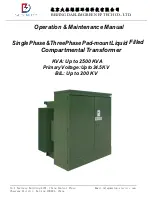
26
Setting the automatic beacon transmit interval
This sets the time interval for automatically sending out an APRS beacon.
1
Press and hold the [
F
MENU
] key → Touch [
APRS
] → [
14 BEACON INTERVAL
].
2
Turn the DIAL knob to select the automatic transmission interval time.
Select one of the following automatic transmission interval times.
30 sec / 1 min / 2 min / 3 min / 5 min / 10 min / 15 min / 20 min / 30 min / 60 min
Reference
Factory shipping value: 5 min
3
Press the PTT.
The automatic transmit interval time will be set and the set mode will be cancelled.
Tips
• When the APRS beacon transmit is changed to [AUTO], the timer for the automatic beacon transmit
interval is reset, and the count for the automatic beacon interval begins. When the set time is reached
the initial beacon will be transmitted.
• Even in [AUTO] beacon transmit, transmission of a beacon may be forced by pressing [
F
MENU
]
followed by [
BCN-TX
] if you are operating in the frequency screen. (if you are in the APRS STATION
LIST screen or APRS STATION LIST detail screen, touch
followed by [
BEACON TX
] instead).
The automatic transmit timer is reset if the beacon transmit is forced.
• If the squelch is open when the specified time has passed to transmit a beacon, the beacon
transmission is delayed. The beacon will be sent when the squelch is closed.
Setting the SmartBeaconing™
SmartBeaconing™ is a function that efficiently transmits an APRS beacon including your
own station position, speed and direction of travel. The information is based on data from
a GPS satellite receiver unit.
This device supports automatic beacon transmission using SmartBeaconing™.
Three different SmartBeaconing™ settings (TYPE1, TYPE2 and TYPE3) are available.
The default values are preset in advance assuming the following operations:
TYPE1: High speed movement in a car etc.
TYPE2: Medium to low speed movement in a car etc.
TYPE3: Walking at a low speed etc.
TYPE2 and TYPE3 settings (especially TYPE3), multiple beacons are transmitted in a
short time, even if the movement speed is relatively slow. As a result, if these settings
are used directly while traveling at high speed in a vehicle, multiple beacons will be
transmitted, resulting in signal congestion.
When moving at a high speed, be sure to return the setting to TYPE1.
If different timing settings are needed, the TYPE1 - TYPE3 parameters can also be
changed. In order to ensure that beacons can be transmitted in an appropriate manner,
adjust the parameters and DIGI PATH settings of the SmartBeaconing™ function for
efficient operation and reduced signal congestion.
















































